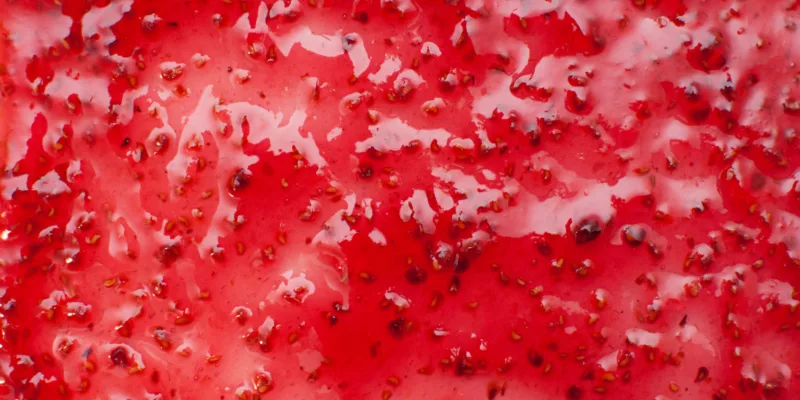
Pectin (440) is used for gelling, thickening and stabilisation with a clean taste. Pectins come in high methoxyl, low methoxyl and amidated types. The key to selecting the right pectin is managing the ionic content of the food.
Application
| Application | Function |
|---|---|
| Jams, Jellies and Marmalades (> 55° Brix) | Formation of a gel network. |
| Jams, Jellies and Marmalades (< 55° Brix) | Formation of a gel network. |
| Bake-stable fruit preparations | Formation of a Bake-stable gel network. |
| Soft drinks | Stabilising turbidity in soft drinks. |
| Yoghurt drinks | Protective colloid. |
| Dietary fibre enrichment | Positive effect on serum cholesterol level. |
| Fruit jelly confectionery | Formation of a gel network. |
Chemistry
Pectins (E440) are water-soluble, polygalacturonic acids containing varying proportions of methyl ester groups. The degree of methylation (D.M.) is the determining factor in their behaviour. The usual and most practical way to classify pectins is to divide them into high and low methoxyl pectins.
High methoxyl pectins have a D.M. of 50% or more, and require sugar and acid for gelation.
Low methoxyl pectins have a D.M. of 50% or less, and require the presence of calcium for gelation. Pectin is extracted from apple pomace and dried citrus peel.
Properties
High methoxyl pectins are used to supplement the natural fruit pectin in the production of jams, jellies and marmalades. They require 55-85% sugar and a pH of between 2.5 and 3.8 in order to set. Their uses are, therefore, limited almost entirely to sugar confectionery and jams.
The pectin jelly gives good flavour release; a desirable mouth feel; and ensures, if correctly used, good fruit distribution. Other uses of these pectins are in stabilising fruit concentrates and protecting the casein in some milk products against coagulation due to acidification.
Low methoxyl pectins are a more recent addition to the range of available gelling agents and stabilisers. They can be used in similar circumstances and manner to alginates, although pectin gels are not as stable to heat as alginate gels.
A pectin gel is more elastic, weaker, and tears more easily and unevenly than an alginate gel. Low methoxyl pectins can be used for trifles, jellies and layered desserts.
The main used of low methoxyl pectics have been in low calorie jams; thickening and gelling sauces, such as mint sauce and cranberry jelly; protecting frozen fruit and reformed fruit products.
